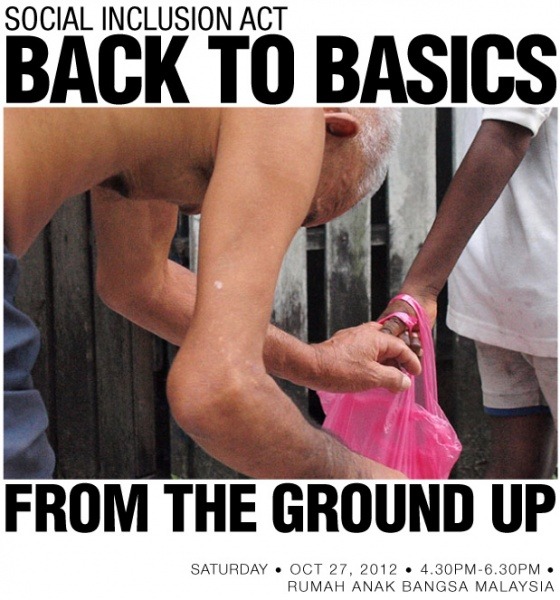The following article was first published at Saya Anak Bangsa Malaysia and written by one “Straits-Mongrel“. Pseudonym notwithstanding, its a good read and we join Haris Ibrahim in urging you to attend this event.
Date: Saturday; Oct 27, 2012
Time: 4.30pm-6.30pm
Place: Rumah Anak Bangsa Malaysia
66, Lorong Setiabistari 1
Kuala Lumpur
FROM the ground, looking upwards, you’d agree we couldn’t have asked for a better head-start. We are after all a land of oil, old-growth timber, grain and fish, cyber districts, and good genes. We inherited a working infrastructure – a top-notch judiciary, schools, hospitals, ports, roads and rail.
With astute management, we surely would’ve been well. We had the basics.
Woulda. Coulda. Shoulda.
From the ground, with the passing of 55 years or 49, be it Merdeka or Malaysia, as lawmakers churn out policy after policy, and lawyers chirp their “correct-correct-correct” counsel, and as we bray each year over the Auditor-General’s report, a hard truth has to be confronted: We haven’t managed quite as well.
The average income for the Bottom 40% households is RM1,529 a month. Let that sink in a bit – four in every ten families. These households are forced to survive on the cost of an Ipad every month.
Now when you consider the average household size is 4.5 persons, that’s RM12.75 a day per person. That quantum is supposed to satisfy an individual’s requirement for food, clothing, rent/utilities, furniture, medical and health, transport/communication, education, and recreation. And who falls under this group? There’s Ali, Ah Chong, Siva, Annie, Tenung… See, when it comes to poverty, there is no checklist for the colour of your skin nor your religion.
They are your soldiers, cooks, firemen, teachers, nurses, clerks, bus-drivers, farmers, salespersons. Very everyday people you meet on the streets.
Peer deeper and more tragic statistics emerge. Six out of ten of these households are headed by people with Primary school education or less. Many are forced to live in urban slums and are virtually cut off from the opportunities available to break out of this cycle. Those social ills we read about or experience, you actually believe it’s a perception?
Our current policies are not working. Conceived and directed from lofty air-conditioned offices, these strategies are currently driven top-down. There are duplications from multiple agencies resulting in gross inefficiencies. Worse of all, they have been hijacked by the political elites; at times, one wonders if we’re seeing an exclusion agenda instead.
The proposed Social Inclusion Act aims to get real about poverty and marginalisation. Launched on August 14, 2012, it proposes a new policy paradigm and delivery mechanism based on two main thrusts:
That the implementation of socially inclusive programmes be decoupled from political power play. Let’s get back to basics.
That the programmes themselves are informed by those who need them most, never a one-size-fits-all prescription. Let’s do it from the ground up.
This Saturday (Oct 27), join us in a dialogue as we walk through the rationale, the hard facts, and the structure of the proposed Social Inclusion Act. Let’s together study the merits and demerits of such a proposal; punch holes, then plug them; and help make this a better deal for all.
Further reading:
- The proposed draft
- The Launch and Press Statement
- Dialogue with political parties
- Azmi Sharom‘s column in The Star


Nice!